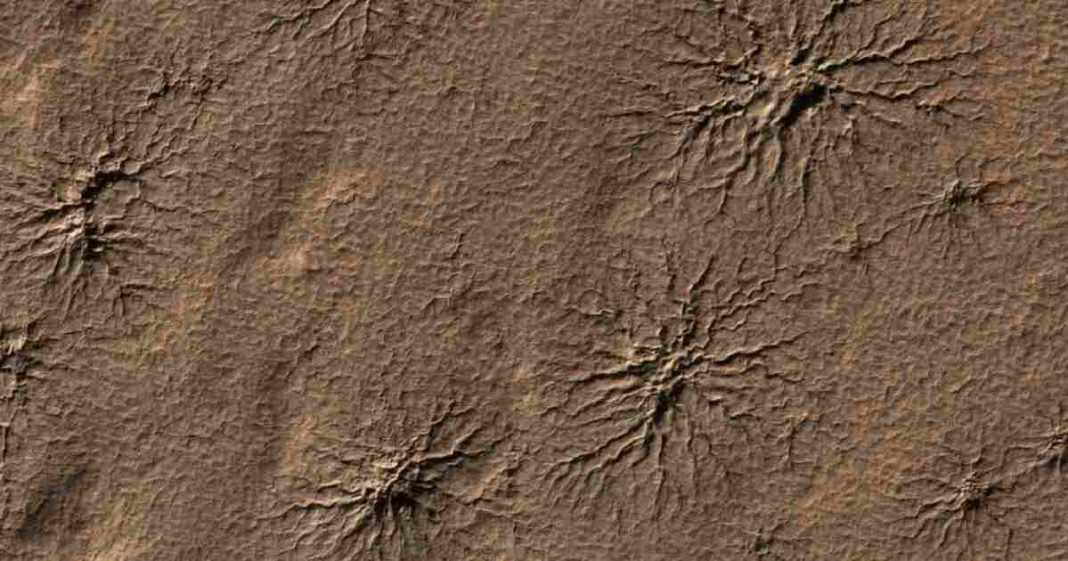For years, scientists have marveled at peculiar spider-like formations on Mars. These geologic features, known as araneiform terrain, stretch across the planet’s southern hemisphere. Discovered in 2003 via orbital images, each formation can extend over half a mile, with hundreds of intricate, spindly “legs.”
Read More: NASA reveals stunning image of the Red Spider Nebula
While the origin of these features remained unclear, scientists theorized that carbon dioxide (CO2) ice played a key role in their formation—a process unique to Mars. Recently, NASA’s Jet Propulsion Laboratory (JPL) team achieved a major breakthrough by replicating these Martian conditions in a controlled environment, shedding new light on this planetary mystery.
How “Spiders” Form on Mars
According to the leading theory, outlined by the Kieffer model, these “spiders” are created when sunlight heats the Martian soil beneath transparent CO2 ice, which builds up on the surface during the Martian winter. The soil absorbs heat, causing the ice closest to it to sublime, turning directly from solid CO2 into gas without becoming liquid.
As the gas pressure builds, it cracks the overlying ice, forcing CO2 gas—and with it, dark dust and sand—through the cracks. This results in visible dark plumes that settle on the surface, leaving behind the spider-like formations when the ice sublimates entirely with the arrival of spring.
Replicating Mars in a Test Chamber
To test this theory, NASA researchers, led by Dr. Lauren Mc Keown, used a special test chamber called DUSTIE (Dirty Under-vacuum Simulation Testbed for Icy Environments). This barrel-sized device, previously used for the Mars Phoenix lander mission, was designed to recreate Mars’ extremely low pressure and cold temperatures, as low as -301°F (-185°C).
The researchers filled DUSTIE with carbon dioxide, allowing it to freeze into slabs of ice. They then heated a simulant of Martian soil from beneath the ice to mimic sunlight warming the planet’s surface. After several trials, the team successfully recreated conditions that led to dark plumes erupting from the ice, scattering dust and debris—just like on Mars.
Breakthrough Moment
The moment the team saw the dark plume was pivotal. After five years of experimentation, Dr. Mc Keown recalled her excitement when the CO2 gas burst from the soil. “It was late on a Friday evening, and the lab manager thought there had been an accident because of my shrieking,” she said.
This breakthrough also revealed an unexpected finding. Ice formed between the grains of Martian soil simulant before cracking, a process previously unconsidered in the Kieffer model. This could explain the unique “cracked” appearance of some Martian spiders.
Mars Exploration
This discovery brings scientists one step closer to understanding Mars’ climate and geological history. While NASA’s Curiosity and Perseverance rovers are currently exploring Mars, they are far from the planet’s southern hemisphere, where these formations are found.
Read More: NASA detects invisible electric field around Earth
Future research will involve simulating sunlight from above, rather than heating the soil from below, to further refine the conditions that lead to spider formation. These findings not only enhance our understanding of Mars’ surface but could also inform future missions, helping scientists choose landing sites and develop tools to safely explore the planet.














